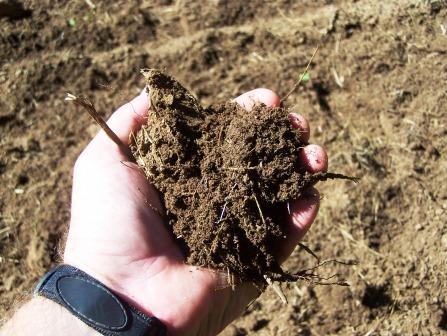
Agricultural News
Drought May Skew Soil Test Results, Agronomist Says
Tue, 30 Oct 2012 10:13:14 CDT

Growers conducting soil tests this fall may be surprised at unexpectedly low potassium (K) levels. It's likely, however, that fields tested in drought-stricken areas have plenty of nutrients waiting to move back into the soil, according to DuPont Pioneer agronomy experts.
"The K is actually quite safe in the plant residues, so growers shouldn't be alarmed if soil test levels of this nutrient are lower than expected. Just be aware that more nutrients will be released into the soil with precipitation," says Andy Heggenstaller, DuPont Pioneer agronomy research manager.
With little rain on most fields in 2012, K, absorbed by corn plants during the growing season, has not yet been released back into the soil from deteriorating corn stalks. In a drought year, K also can become fixed between clay layers until water moves through the soil again. Expect that K test levels will increase to more normal values if you can wait to sample following a significant fall rain event.
"Some growers may think it's a better idea to wait and sample soil in the spring because it will give them a more reliable nutrient reading," says Heggenstaller. "But I would caution against spring sampling unless this is your normal practices, because you would end up comparing apples and oranges and couldn't rely on previous soil tests as a basis."
Even though K levels from this year's soil test will likely be lower than actual amounts, farmers can rely on crop removal rates and previous years' soil test results as a guide to estimate next year's K needs. To determine crop removal this year, multiply the field's harvested bushels by an estimated 0.3 pounds of K removed per bushel of corn or 1.5 pounds of K removed per bushel of soybean. The calculated amount is a good estimate of how much K was consumed by the crop during the growing season and thus the minimum amount that should be replaced for the next crop if historical soil test levels were in the optimum range.
"Depending on management style, this method of calculating K needs might not be the best long-term approach for managing K fertility, but in drought years it is often the best option for growers because of the variability in soil sampling," says Heggenstaller. "I still recommend that producers test soils this year because it will prove useful when determining future fertilizer needs."
Other key nutrients, including phosphorous (P), should not show as much variability in soil tests as a result of drought. Phosphorus does not get fixed in clay soils to the extent that K does and is not nearly as abundant in crop residues as K. In the case of nitrogen (N), most producers applied enough to achieve a high-yielding crop in 2012, but ended up receiving little precipitation and lower than anticipated yields. In these fields, it is very likely that extra N is present in the soil. Depending on rainfall between now and next spring, some of this N may be available for next year's crop.
Lack of water also may cause a drop in soil pH from previous years. Without precipitation, lime applied to help balance pH in spring 2012 cannot infiltrate the soil and take full effect. Additionally, dry soil conditions are often associated with increased salt concentration at the soil surface, which can also result in lower than expected pH test values.
WebReadyTM Powered by WireReady® NSI
Top Agricultural News
More Headlines...



















